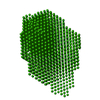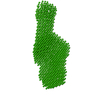+Search query
-Structure paper
| Title | Apple Snail Perivitellin Precursor Properties Help Explain Predators' Feeding Behavior. |
|---|---|
| Journal, issue, pages | Physiol Biochem Zool, Vol. 90, Issue 4, Page 461-470, Year 2017 |
| Publish date | Sep 21, 2017 |
 Authors Authors | María Pilar Cadierno / Marcos Sebastián Dreon / Horacio Heras /  |
| PubMed Abstract | In contrast with vitellogenin maturation, it is unknown whether gastropod perivitellin precursors are subject to large structural changes. The gastropod reproductive tract includes an accessory ...In contrast with vitellogenin maturation, it is unknown whether gastropod perivitellin precursors are subject to large structural changes. The gastropod reproductive tract includes an accessory organ, the albumen gland (AG), that produces and secretes perivitelline fluid. In the apple snail Pomacea canaliculata, the large, reddish-pink AG provides eggs with perivitellins that are defensive against predators. Although the AG makes a considerable contribution to apple snail biomass, field observations indicate that it is rejected by avian and mammalian predators, although the underlying reason remains unknown. By analyzing the structure-function properties of P. canaliculata perivitellin precursors, we provide insight into perivitellin maturation and its relationship with apple snail predator feeding behavior. Structural analysis using small-angle X-ray scattering, absorption and fluorescence spectroscopy, circular dichroism, electrophoresis, chromatography, and partial proteolysis showed that the size, shape, and structure of perivitellin precursors resemble those of egg mature forms. Functional analysis indicates that the precursors of the defensive perivitellins ovorubin (PcOvo) and perivitellin-2 (PcPV2) are highly stable and antinutritive, withstanding proteinase digestion and displaying structural stability of their quaternary structure under a wide pH range (4.0-10.0). Furthermore, AG extracts limit a predator's ability to digest nutrients and are toxic to mice (median lethal concentration 96 h after administration: 5.9 mg/kg). Treated mice displayed neurologic signs similar to those produced by egg PcPV2. Results indicate that apple snails store active precursors of egg proteins inside the AG, providing evidence that gastropod perivitellin precursors do not experience the large structural processing of invertebrate vitellogenin maturation. These defensive proteins provide the apple snail AG with neurotoxic, antinutritive, and antidigestive activity, a likely explanation for the predators' feeding behavior. |
 External links External links |  Physiol Biochem Zool / Physiol Biochem Zool /  PubMed:28402234 PubMed:28402234 |
| Methods | SAS (X-ray synchrotron) |
| Structure data |  SASDBW4:  SASDBX4: |
| Source |
|
 Movie
Movie Controller
Controller Structure viewers
Structure viewers About Yorodumi Papers
About Yorodumi Papers



 Pomacea canaliculata (invertebrata)
Pomacea canaliculata (invertebrata)